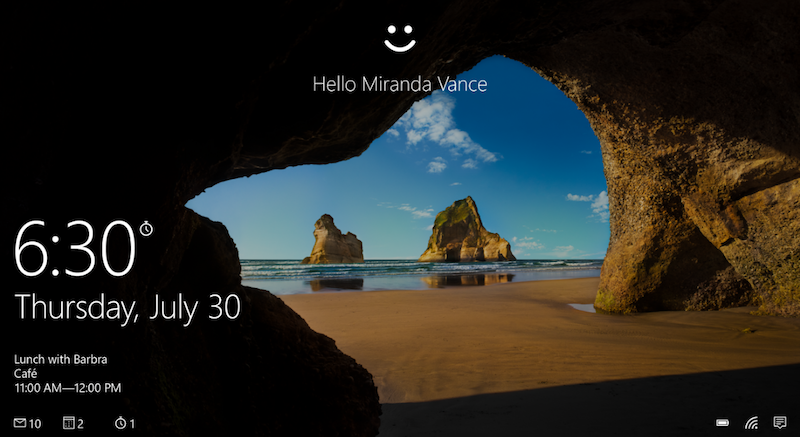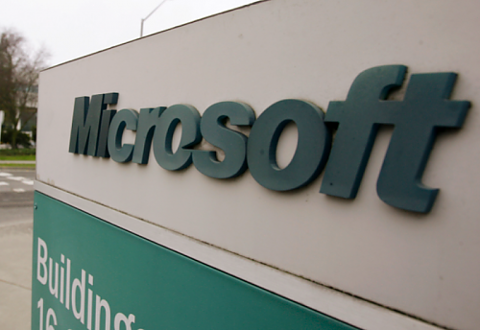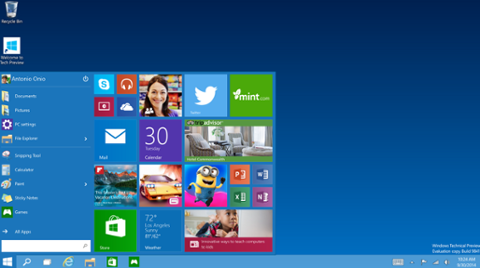 Windows 10 is now a year old. According to data from analytics firm Net Applications, the operating system holds 21.13 percent of the desktop OS market, lagging Windows 7 (which has 47 percent) but ahead of Windows XP (with 10.34 percent) and Windows 8.1 (7.8 percent). Windows 10 was always intended as something of a cleanup job. After Windows 8 tried to serve both the mobile and PC markets by offering users a touch-happy, tile-filled Start screen alongside the traditional desktop—and failing in the process, based on weak reviews and a slow rate of adoption—Microsoft went back to the user-interface basics. In simplest terms, Windows 10 is a polished-up evolution on Windows 7’s aesthetics and feature set, albeit with the ability to run on handheld devices such as smartphones in addition to traditional PCs. After the mess of Windows 8, Microsoft so needed Windows 10 to become a blockbuster that it gave the operating system away as a free upgrade to anyone already running Windows 7, Windows 8, or Windows 8.1 on a PC or tablet. In April 2015, a few months before release, Microsoft executives predicted that Windows 10 would be running on a billion devices within two or three years. One year after the launch of Windows 10, however, it’s clear that Microsoft won’t make that billion-devices goal within its stated timeline. That’s due at least in part to its flailing mobile business: with Apple’s iOS and Google Android effectively making the smartphone market a duopoly, and Windows Phone bleeding market-share, it’s unlikely that Windows 10 (even if optimized for smaller screens) can make Microsoft a player in that market in the short term. “Due to the focusing of our phone hardware business, it will take longer than [fiscal year 2018] for us to reach our goal of 1 billion monthly active devices,” read a July statement from a Microsoft spokesperson. “In the year ahead, we are excited about usage growth coming from commercial deployments and new devices.” For his part, Microsoft CEO Satya Nadella has expansive plans for Windows as a platform. “It is a service, that is how I think of it,” he told a gathering of employees in June, according to VentureBeat. “Windows update is probably the biggest service we have because it touches 1.5 billion machines every day, and our goal is to really change what is the definition of an operating system.” In the short term, Windows 10 will continue to add capabilities. For developers and sysadmins, the new Windows 10 Anniversary update offers a handful of new features dedicated to administration and security, including Windows Defender Advanced Threat Protection (WDATP).
Windows 10 is now a year old. According to data from analytics firm Net Applications, the operating system holds 21.13 percent of the desktop OS market, lagging Windows 7 (which has 47 percent) but ahead of Windows XP (with 10.34 percent) and Windows 8.1 (7.8 percent). Windows 10 was always intended as something of a cleanup job. After Windows 8 tried to serve both the mobile and PC markets by offering users a touch-happy, tile-filled Start screen alongside the traditional desktop—and failing in the process, based on weak reviews and a slow rate of adoption—Microsoft went back to the user-interface basics. In simplest terms, Windows 10 is a polished-up evolution on Windows 7’s aesthetics and feature set, albeit with the ability to run on handheld devices such as smartphones in addition to traditional PCs. After the mess of Windows 8, Microsoft so needed Windows 10 to become a blockbuster that it gave the operating system away as a free upgrade to anyone already running Windows 7, Windows 8, or Windows 8.1 on a PC or tablet. In April 2015, a few months before release, Microsoft executives predicted that Windows 10 would be running on a billion devices within two or three years. One year after the launch of Windows 10, however, it’s clear that Microsoft won’t make that billion-devices goal within its stated timeline. That’s due at least in part to its flailing mobile business: with Apple’s iOS and Google Android effectively making the smartphone market a duopoly, and Windows Phone bleeding market-share, it’s unlikely that Windows 10 (even if optimized for smaller screens) can make Microsoft a player in that market in the short term. “Due to the focusing of our phone hardware business, it will take longer than [fiscal year 2018] for us to reach our goal of 1 billion monthly active devices,” read a July statement from a Microsoft spokesperson. “In the year ahead, we are excited about usage growth coming from commercial deployments and new devices.” For his part, Microsoft CEO Satya Nadella has expansive plans for Windows as a platform. “It is a service, that is how I think of it,” he told a gathering of employees in June, according to VentureBeat. “Windows update is probably the biggest service we have because it touches 1.5 billion machines every day, and our goal is to really change what is the definition of an operating system.” In the short term, Windows 10 will continue to add capabilities. For developers and sysadmins, the new Windows 10 Anniversary update offers a handful of new features dedicated to administration and security, including Windows Defender Advanced Threat Protection (WDATP). Microsoft's Windows 10: One Year Later
 Windows 10 is now a year old. According to data from analytics firm Net Applications, the operating system holds 21.13 percent of the desktop OS market, lagging Windows 7 (which has 47 percent) but ahead of Windows XP (with 10.34 percent) and Windows 8.1 (7.8 percent). Windows 10 was always intended as something of a cleanup job. After Windows 8 tried to serve both the mobile and PC markets by offering users a touch-happy, tile-filled Start screen alongside the traditional desktop—and failing in the process, based on weak reviews and a slow rate of adoption—Microsoft went back to the user-interface basics. In simplest terms, Windows 10 is a polished-up evolution on Windows 7’s aesthetics and feature set, albeit with the ability to run on handheld devices such as smartphones in addition to traditional PCs. After the mess of Windows 8, Microsoft so needed Windows 10 to become a blockbuster that it gave the operating system away as a free upgrade to anyone already running Windows 7, Windows 8, or Windows 8.1 on a PC or tablet. In April 2015, a few months before release, Microsoft executives predicted that Windows 10 would be running on a billion devices within two or three years. One year after the launch of Windows 10, however, it’s clear that Microsoft won’t make that billion-devices goal within its stated timeline. That’s due at least in part to its flailing mobile business: with Apple’s iOS and Google Android effectively making the smartphone market a duopoly, and Windows Phone bleeding market-share, it’s unlikely that Windows 10 (even if optimized for smaller screens) can make Microsoft a player in that market in the short term. “Due to the focusing of our phone hardware business, it will take longer than [fiscal year 2018] for us to reach our goal of 1 billion monthly active devices,” read a July statement from a Microsoft spokesperson. “In the year ahead, we are excited about usage growth coming from commercial deployments and new devices.” For his part, Microsoft CEO Satya Nadella has expansive plans for Windows as a platform. “It is a service, that is how I think of it,” he told a gathering of employees in June, according to VentureBeat. “Windows update is probably the biggest service we have because it touches 1.5 billion machines every day, and our goal is to really change what is the definition of an operating system.” In the short term, Windows 10 will continue to add capabilities. For developers and sysadmins, the new Windows 10 Anniversary update offers a handful of new features dedicated to administration and security, including Windows Defender Advanced Threat Protection (WDATP).
Windows 10 is now a year old. According to data from analytics firm Net Applications, the operating system holds 21.13 percent of the desktop OS market, lagging Windows 7 (which has 47 percent) but ahead of Windows XP (with 10.34 percent) and Windows 8.1 (7.8 percent). Windows 10 was always intended as something of a cleanup job. After Windows 8 tried to serve both the mobile and PC markets by offering users a touch-happy, tile-filled Start screen alongside the traditional desktop—and failing in the process, based on weak reviews and a slow rate of adoption—Microsoft went back to the user-interface basics. In simplest terms, Windows 10 is a polished-up evolution on Windows 7’s aesthetics and feature set, albeit with the ability to run on handheld devices such as smartphones in addition to traditional PCs. After the mess of Windows 8, Microsoft so needed Windows 10 to become a blockbuster that it gave the operating system away as a free upgrade to anyone already running Windows 7, Windows 8, or Windows 8.1 on a PC or tablet. In April 2015, a few months before release, Microsoft executives predicted that Windows 10 would be running on a billion devices within two or three years. One year after the launch of Windows 10, however, it’s clear that Microsoft won’t make that billion-devices goal within its stated timeline. That’s due at least in part to its flailing mobile business: with Apple’s iOS and Google Android effectively making the smartphone market a duopoly, and Windows Phone bleeding market-share, it’s unlikely that Windows 10 (even if optimized for smaller screens) can make Microsoft a player in that market in the short term. “Due to the focusing of our phone hardware business, it will take longer than [fiscal year 2018] for us to reach our goal of 1 billion monthly active devices,” read a July statement from a Microsoft spokesperson. “In the year ahead, we are excited about usage growth coming from commercial deployments and new devices.” For his part, Microsoft CEO Satya Nadella has expansive plans for Windows as a platform. “It is a service, that is how I think of it,” he told a gathering of employees in June, according to VentureBeat. “Windows update is probably the biggest service we have because it touches 1.5 billion machines every day, and our goal is to really change what is the definition of an operating system.” In the short term, Windows 10 will continue to add capabilities. For developers and sysadmins, the new Windows 10 Anniversary update offers a handful of new features dedicated to administration and security, including Windows Defender Advanced Threat Protection (WDATP). 


